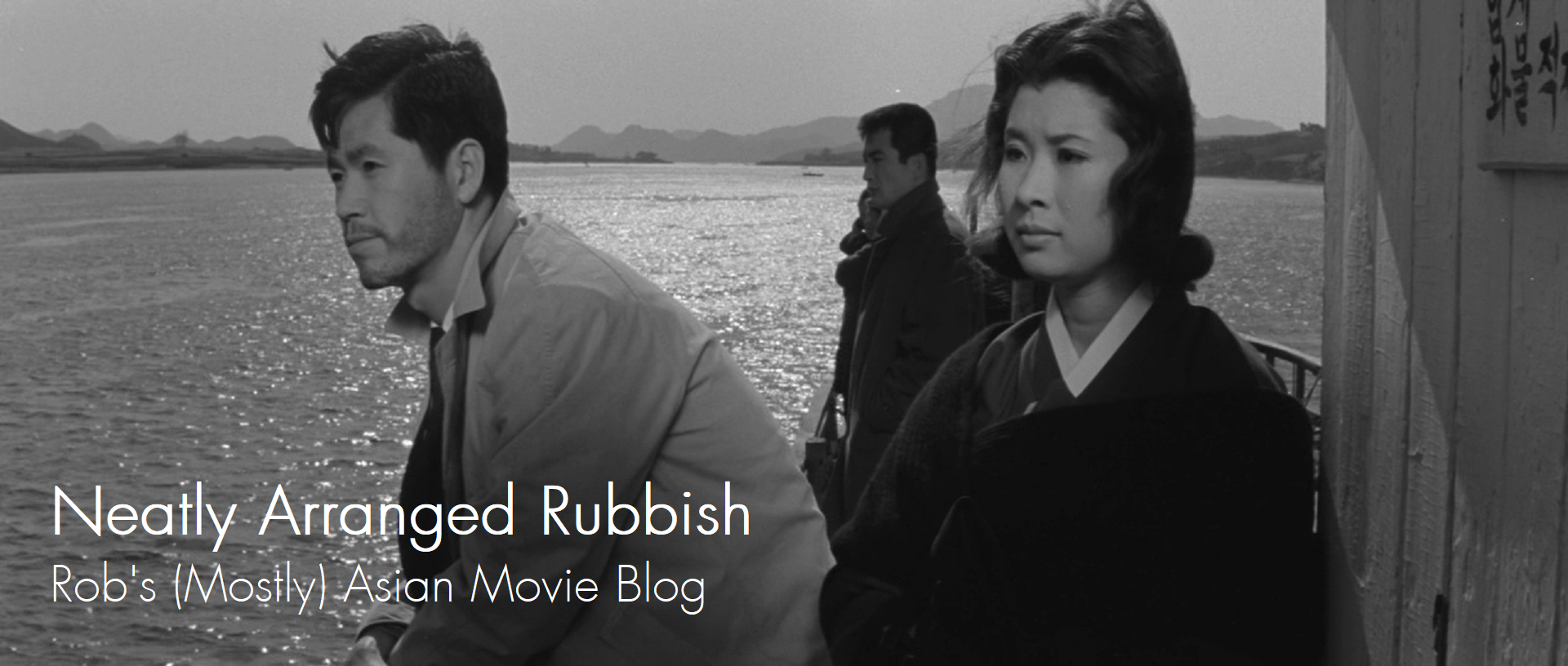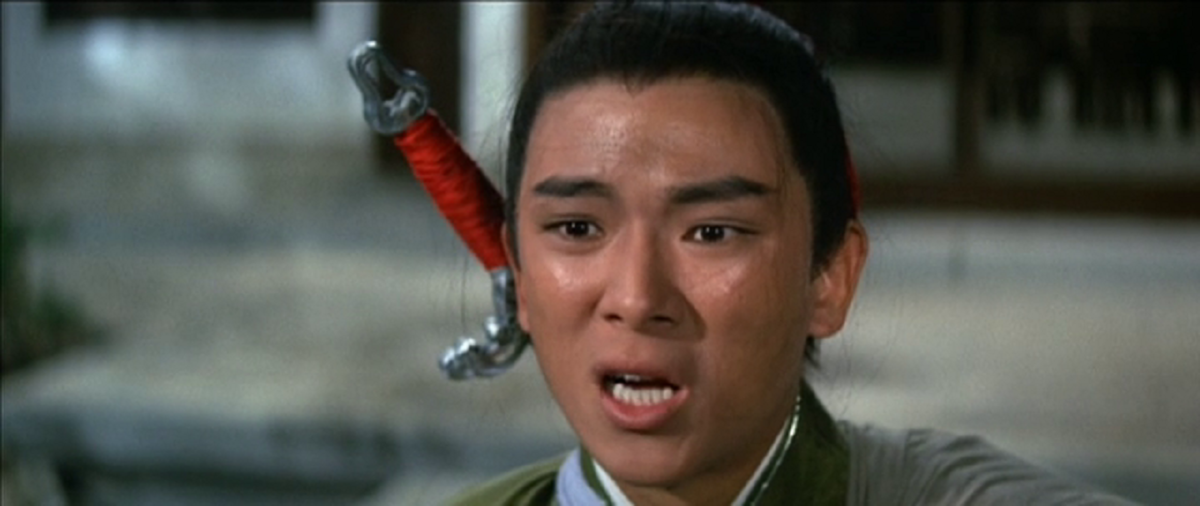Last Updated on September 30, 2020 by rob
On his way to Jin Castle to meet his fiancee Lianzhu (Chin Ping) and avenge the murder of his family young swordsman Kuei Wu (Jimmy Wang-Yu) is witness to a robbery that implicates the head of his betrothed’s family, Dragon Jin. But on arrival Kuei’s suspicions about his new in-laws prove mutual. The real culprits turn out to be the evil Red Lotus Clan who’ve taken over a temple and are posing as monks. Kuei and Lianzhu investigate the temple and are captured. After a series of escapes and fights the mysterious Red Lady (Ivy Ling-Po) helps the lovers defeat their enemies.
This is a handsome looking production with picturesque outdoor locations and lavish indoor studio sets but for all that it’s also a rather turgid melodrama. It starts off promisingly but once Kuei arrives at the Jin’s castle to meet his fiancee it practically grinds to a halt over long-winded family disputes about whether the young swordsman can be trusted. When Kuei and Lianzhu are forbidden from leaving their decision to elope results in them having to do repetitive battle with virtually every female member of the family in order to escape and it always ends in the same way; Kuei hopelessly outmatched by the superior swordsmanship of the ladies, Lianzhu stepping in, declaring how much they love one another and winning their release.
Look, I’m as susceptible to sincerely wrought declarations of true love as anyone but by the same token you don’t need to keep seeing it over and over. The villains are even blander, a mob of schemers dressed as monks all indistinguishable one from the other. There’s a great lack of genuine drama underpinning the action here – it’s all melodramatic posturing with little to truly anchor the emotions. Intriguing characters, such as the Red Lady, get introduced and then vanish without explanation. To be honest I found Temple of the Red Lotus more interesting for both the similarities and differences with the genre as it would become. This was Shaw’s first martial arts movie after more than a decade spent making romances and musicals and its success would send the company down a path that would make it famous around the world.
So just from a historical perspective there’s the attraction of seeing how some well known genre faces began their career. Jimmy Wang Yu of course is best known as the intense, one man killing machine of One-Armed Swordsman (1967) fame but here he plays a hero as quick to sob for a fallen comrade as he is to draw his sword. There’s a certain amusement value in seeing just how baby-faced and clean cut he is here given how Wang Yu would redefine the martial arts hero role just a few years later. On the other hand you do have a prevalence of martial arts heroines, one of the enduring attractions of Shaw Brothers movies. Apart from child star Fung Bo-Bo who comes into her own in the sequel the rest of the female cast here swing a mean sword. It’s fun to watch the ladies do their stuff and Ivy Ling-Po (a huge star of the period) looks so dazzling in red and so imposing a figure – you can just feel the star power radiating off her – that it’s frustrating she’s so little used.
As for the actual swordplay it consists of a lot of frantic parrying, thrusting and dodging around reminiscent of American swordplay movies such as The Adventures of Robin Hood (1938), albeit one with martial arts trimmings, e.g., the characters can jump up onto walls or roofs in a single bound and there’s the occasional glimpse of a severed limb or a bloody stab wound. The fights are filmed mostly in static long shots with the camera only moving to follow the stars around or tracking in on them from a wide angle to a mid-shot. It’s not the style as it would later become – although the editing of the action scenes is already noticeably faster than it was in its western equivalents – but it is typical of these early ones. Popular enough in its day that two increasingly better sequels would follow; The Twin Swords (1965) and The Sword and the Lute (1967).



